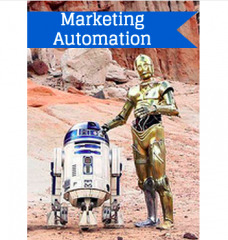By Alex Miller
If your company is struggling to find a balance between quantity and quality in its marketing plan, marketing automation may provide a solution.
Marketing automation systems are experiencing a surge in popularity; in fact, 84 percent of the top companies in the U.S. are using or plan to use marketing automation in 2015.
And marketing automation isn’t just for the big corporate behemoths, either. Ninety-two percent of smaller businesses state they plan to make room in their marketing budget for it.
Despite this clear trend, certain myths and misconceptions about marketing automation leave many business decision makers reluctant to embrace it.
Inaccurate information about the cost, complexity, and effectiveness of marketing automation (not to mention a lot of bad examples of companies who don’t use it properly) prevent many organizations from taking advantage of its many benefits.
Let’s take a look at some of these widespread myths and separate the fact from the fiction.
Myth #1: Marketing Automation Systems are Difficult and Complicated
This myth actually has a grain of truth.
For large companies with customized enterprise systems, marketing automation can take a year or more to implement.
However, the majority of marketing automation technologies are designed to be simple and user-friendly, allowing small- or mid-sized companies to take advantage of marketing automation’s benefits within weeks of implementation.
Organizations may want to test out one of these systems by automating something straightforward such as a monthly email blast.
As they gain confidence in the marketing automation, marketers can add other elements, such as search engine marketing, or aspects of social media.
If you are ready to take your first step in marketing automation, start with email.
Sign up with MailChimp or AWeber. Both services offer plenty of support to get you started.
Myth #2: Marketing Automation Systems are Expensive
In the early days of marketing automation, the only real-world applications tended to be pricey enterprise systems used by large companies; however, these large enterprise applications represent only a small fraction of today’s marketing automation systems.
Marketing automation systems are now built to meet the needs and budgets of small- and mid-sized companies.
The majority of these systems are cloud-based, and most vendors offer flexible pricing options that allow companies to get the functionality they need at a price they can afford.
Marketing automation comes in all shapes and sizes, so pick one that fits the requirements of your campaigns and matches your budget.
Myth #3: You Need a Degree in Statistics
There was a time when the data gleaned from marketing automation was painful to analyze unless you had a degree in mathematics.
Today’s marketing automation systems are designed with the layperson in mind.
Intuitive interfaces make it easy to find the data you need, and powerful engines handle the data mining and the heavy math. While you still need to understand the important metrics for your business, you can rest assured that no statistics expertise is required to sort through the data.
Myth #4: It Offers Few Lead Generation Benefits
Some business decision makers are under the impression that marketing automation systems are only good for nurturing leads in the middle of the sales funnel.
It’s true that marketing automation excels at aiding in those mid-funnel activities; however, there are numerous activities at the top of the funnel that can be streamlined and automated with the help of a marketing automation system.
For example, SEO audit functionality can ensure your website is set up to optimize search traffic, and automated emails can be created to keep the conversation going with new contacts.
These capabilities, along with website visitor tracking and other functionality, can give companies the competitive advantage early in the sales funnel. The responses you get from customers can also often lead to new possibilities you had not considered.
Myth #5: Marketing Automation Kills Creativity
When you think about automated marketing systems, it’s easy to picture a factory-like scenario with no room for creativity or innovation.
In reality, marketing automation tends to give creativity a boost. Marketers can take the pre-made templates offered by many marketing automation vendors and add their own creative touches and branding to craft a unique product with little effort.
So although using automated marketing templates can offer only so much, the idea is to customize and personalize the campaigns with information that highlights your company’s strengths and speaks directly to your customers.
Plus, an automated system’s ability to eliminate the repetitive, tedious, but necessary tasks associated with some marketing activities leaves marketers with more time and energy to focus on the big picture and develop creative, innovative new campaigns.
In recent years, the marketing landscape has become more complex than ever before.
When used correctly, marketing automation can help companies address today’s challenges head-on and stay ahead of the competition.
These automated technologies simplify tasks and make them more efficient, allowing businesses to make money more easily.
It’s no wonder one-quarter of all Fortune 500 business-to-business companies are already using marketing automation technologies.
It’s time to ditch the myths and begin to think about what parts of your strategy can be supported and improved through the use of marketing automation.
photo credit: Creative Commons and the Canva design skillz of Laura Petrolino
